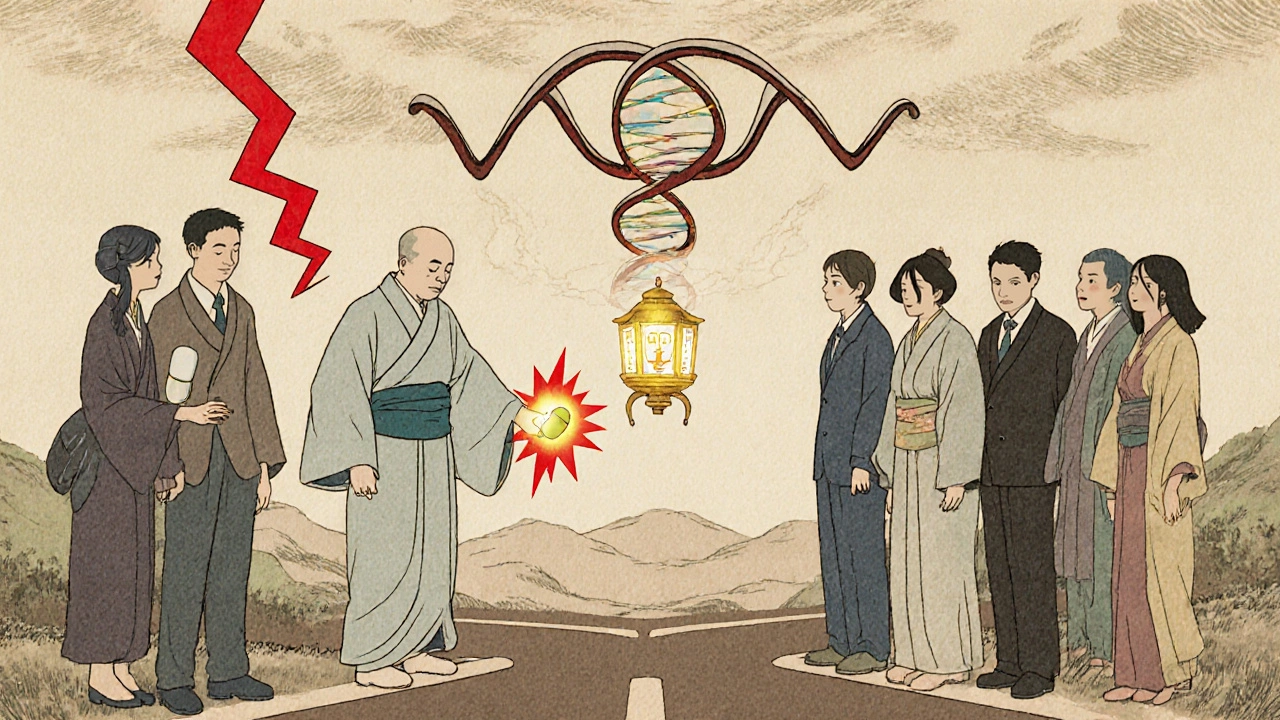Drug Interactions with Specific Statins: Class Effects and Differences

Statin Interaction Checker
Result will appear here after checking
When you take a statin to lower your cholesterol, you’re not just managing one thing-you’re managing a web of possible drug interactions that can turn a safe treatment into a dangerous one. Not all statins are the same. Some are like fragile glass, easily shattered by common medications. Others are built tougher, with fewer pathways for trouble. Knowing the difference isn’t just helpful-it can save your muscles, your liver, and maybe your life.
Why Statin Interactions Matter More Than You Think
About 32 million Americans take statins. That’s one in five adults. And nearly half of them are also on at least one other medication-blood pressure pills, diabetes drugs, antibiotics, even over-the-counter supplements. That’s where things get risky. Statins work by blocking HMG-CoA reductase, an enzyme your liver uses to make cholesterol. But how your body processes each statin varies wildly. Some are broken down by liver enzymes that other drugs also use. When two drugs compete for the same enzyme, one can pile up to toxic levels. That’s how a simple combo like simvastatin and clarithromycin can spike statin levels by 10 times and trigger muscle breakdown-rhabdomyolysis-a rare but deadly condition that can lead to kidney failure.Metabolism Matters: CYP Enzymes and the Statin Divide
The biggest split among statins comes down to how they’re processed. Five of the seven main statins-atorvastatin, simvastatin, lovastatin, fluvastatin, and the now-withdrawn cerivastatin-rely on cytochrome P450 enzymes, especially CYP3A4 and CYP2C9. The other three-pravastatin, rosuvastatin, and pitavastatin-barely use these enzymes at all.- Simvastatin, lovastatin, and atorvastatin are mostly handled by CYP3A4. That means anything that blocks this enzyme-like the antibiotic clarithromycin, the antifungal ketoconazole, or HIV drugs like ritonavir-can cause a dangerous backup. Clarithromycin can make simvastatin levels jump 10-fold. For lovastatin? Up to 16-fold.
- Fluvastatin leans on CYP2C9, so it’s more at risk from drugs like warfarin or the diabetes medication glimepiride.
- Pravastatin, rosuvastatin, and pitavastatin are mostly cleared by the kidneys or through glucuronidation. They don’t rely heavily on CYP enzymes, so they’re far less likely to clash with common antibiotics or antivirals.
This isn’t just theory. A 2016 American Heart Association review found that patients on simvastatin and clarithromycin had a 3.5 times higher risk of hospitalization for muscle injury than those on pravastatin with the same antibiotic.
OATP1B1: The Hidden Player in Statin Safety
There’s another system at work: the OATP1B1 transporter. This protein shuttles statins into liver cells where they’re supposed to work. If something blocks it, the statin stays in your blood instead-raising your risk of side effects. Drugs like cyclosporine (used after transplants), gemfibrozil (a fibrate for triglycerides), and even some HIV meds can jam this transporter. The result? Rosuvastatin levels can rise by 7.1-fold with cyclosporine. Pitavastatin? Same thing. Pravastatin? Only a 1.5-fold increase. That’s why the FDA explicitly says: don’t combine cyclosporine with lovastatin, simvastatin, or pitavastatin. But pravastatin? It’s okay up to 40 mg daily.Even something as common as colchicine-used for gout flares-can raise statin levels slightly. Your doctor might not cut your statin, but they’ll watch you closer for muscle pain or weakness.

Which Statin Is Safest With Other Meds?
Here’s the real-world breakdown:| Statin | Primary Metabolism | High-Risk Drug Examples | Interaction Severity | Safer Alternatives |
|---|---|---|---|---|
| Simvastatin | CYP3A4 | Clarithromycin, diltiazem, cyclosporine, grapefruit juice | Very High | Pravastatin, rosuvastatin |
| Lovastatin | CYP3A4 | Clarithromycin, HIV protease inhibitors, grapefruit juice | Very High | Pravastatin, rosuvastatin |
| Atorvastatin | CYP3A4 | Clarithromycin, cyclosporine, diltiazem | Moderate to High | Pravastatin, rosuvastatin |
| Fluvastatin | CYP2C9 | Warfarin, fluconazole, glimepiride | Moderate | Pravastatin, rosuvastatin |
| Pravastatin | Renal (minimal CYP) | Cyclosporine (low risk), gemfibrozil | Lowest | - |
| Rosuvastatin | Minimal CYP, OATP1B1 | Cyclosporine, gemfibrozil | Moderate (OATP1B1 only) | Pravastatin |
| Pitavastatin | Glucuronidation, OATP1B1 | Cyclosporine, gemfibrozil | High (OATP1B1) | Pravastatin |
Pravastatin stands out. It’s not metabolized by CYP enzymes. It doesn’t rely on liver transporters the same way. It’s excreted mostly through the kidneys. That makes it the safest bet for patients on multiple meds-especially those with HIV, heart transplants, or chronic kidney disease.
When Fibrates and Statins Mix
Fibrates like gemfibrozil and fenofibrate are often paired with statins to tackle both cholesterol and triglycerides. But gemfibrozil is a troublemaker. It blocks not just CYP2C8 but also glucuronidation-the backup cleanup system for statins. That’s why it can double statin levels and make muscle damage far more likely.The American College of Cardiology says: avoid gemfibrozil with any statin except pravastatin. If you need a fibrate, choose fenofibrate instead. It doesn’t interfere with statin metabolism the same way. It’s a safer combo.
What About Ticagrelor and Other Heart Drugs?
Ticagrelor (Brilinta) is a blood thinner used after heart attacks or stents. It’s often prescribed with statins. But here’s the catch: ticagrelor can slightly raise atorvastatin levels. Not enough to be dangerous. The 2022 ACC guidelines say you can still use atorvastatin with ticagrelor-just avoid high doses of simvastatin or lovastatin. Stick to 40 mg or less if you’re on those.Calcium channel blockers like diltiazem and verapamil? They’re common for high blood pressure. But they also block CYP3A4. If you’re on simvastatin or lovastatin, your doctor might switch you to pravastatin or rosuvastatin-or lower your statin dose.

Genetics Play a Role Too
Your genes matter. A common variation in the SLCO1B1 gene-called the c.521T>C polymorphism-makes some people absorb statins too well. This single gene change can raise the risk of muscle damage from simvastatin by 4.5 times. It’s why some people get muscle pain on a low dose while others take 80 mg with no issues.The FDA added this genetic info to simvastatin’s label back in 2011. But most doctors don’t test for it-yet. If you’ve had unexplained muscle pain on a statin, especially simvastatin, ask if genetic testing might help. It’s not routine, but it could explain why one drug didn’t work for you while another did.
What You Should Do
- If you’re on multiple medications, ask your doctor which statin is safest for you-not just which one lowers cholesterol the most.
- Never start a new prescription, supplement, or OTC drug without checking for statin interactions. Even St. John’s wort or red yeast rice can interfere.
- If you feel unexplained muscle pain, weakness, or dark urine, stop the statin and call your doctor immediately. Don’t wait.
- Pravastatin is often the best choice if you’re on HIV meds, immunosuppressants, or multiple heart drugs.
- Avoid simvastatin 80 mg entirely. The FDA warns it offers no extra heart benefit but doubles the risk of muscle damage.
What’s Next?
New drugs like bempedoic acid (Nexletol) are coming onto the scene. They lower LDL without relying on the same liver pathways as statins-and they have almost no drug interactions. In the CLEAR Outcomes trial, it cut heart attacks and strokes by 17% with minimal interaction risk.Meanwhile, researchers are building tools that use your genetic data, current meds, and liver function to predict your statin risk before you even start. These systems could soon tell your doctor: “Don’t give simvastatin to this patient. Give pravastatin instead.”
For now, the message is simple: statins save lives. But not all statins are equal. The right one for you depends on what else you’re taking. Don’t assume your statin is safe just because your doctor prescribed it. Ask the question. Know the difference. Your muscles-and your heart-will thank you.
Can I drink grapefruit juice with my statin?
No, not if you’re taking simvastatin, lovastatin, or atorvastatin. Grapefruit juice blocks CYP3A4, the same enzyme that breaks down these statins. One glass can raise their levels by up to 15 times, increasing your risk of muscle damage. Pravastatin, rosuvastatin, and pitavastatin are safer options if you want to keep drinking grapefruit juice-but even then, moderation is best.
Is pravastatin the safest statin overall?
For people taking multiple medications-especially HIV drugs, transplant meds, or antibiotics-yes. Pravastatin doesn’t rely on CYP enzymes and has the lowest interaction risk of any statin. It’s also the only one the FDA says is safe to take with cyclosporine at standard doses. That makes it the go-to choice for complex medication regimens.
Why is simvastatin 80 mg no longer recommended?
The FDA and American Heart Association pulled the 80 mg dose of simvastatin because studies showed it didn’t offer more heart protection than lower doses-but it doubled the risk of rhabdomyolysis. The risk is highest in the first year, especially in older adults or those with kidney problems. Stick to 20-40 mg unless your doctor has a very specific reason to go higher.
Can I take statins with antibiotics?
It depends. Antibiotics like clarithromycin and erythromycin are dangerous with simvastatin, lovastatin, and atorvastatin. Azithromycin is safe. Amoxicillin and ciprofloxacin don’t interfere. Always tell your pharmacist or doctor what statin you’re on before starting any new antibiotic. Never assume it’s safe.
What should I do if I start feeling muscle pain?
Stop the statin and call your doctor right away. Muscle pain, weakness, or dark urine could be signs of rhabdomyolysis. Your doctor will check your creatine kinase (CK) levels and may switch you to a safer statin like pravastatin or rosuvastatin. Don’t wait for symptoms to get worse. Early action prevents serious damage.
